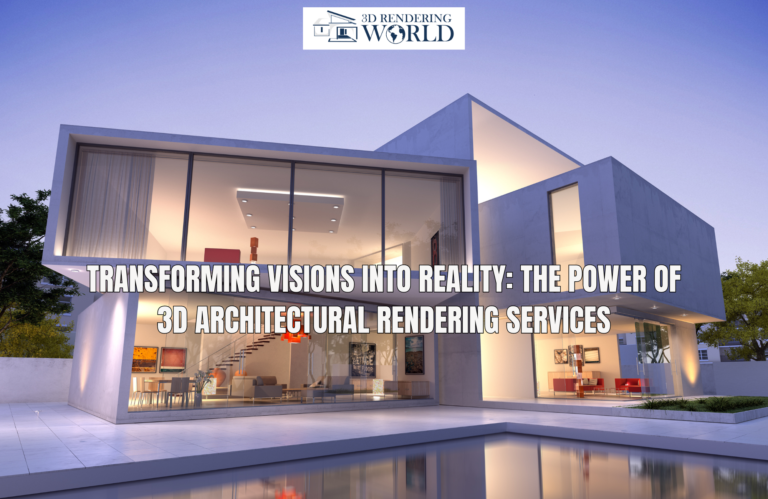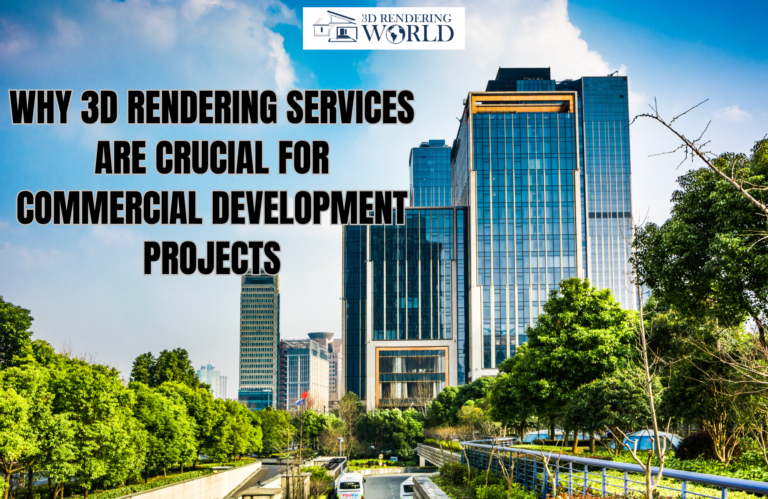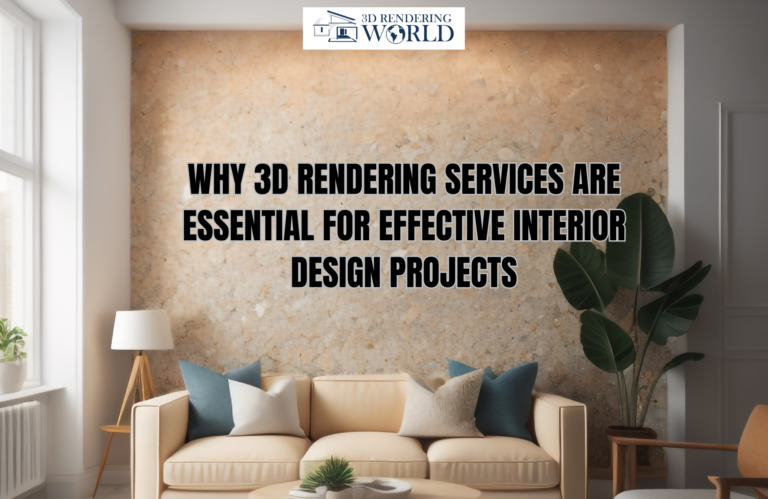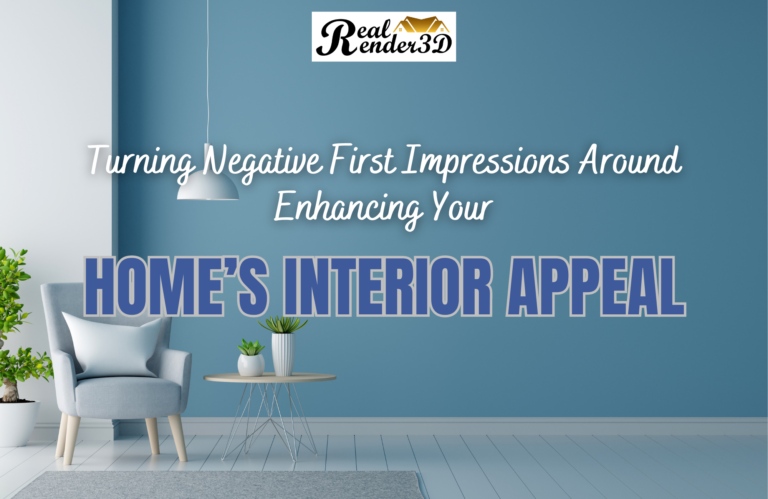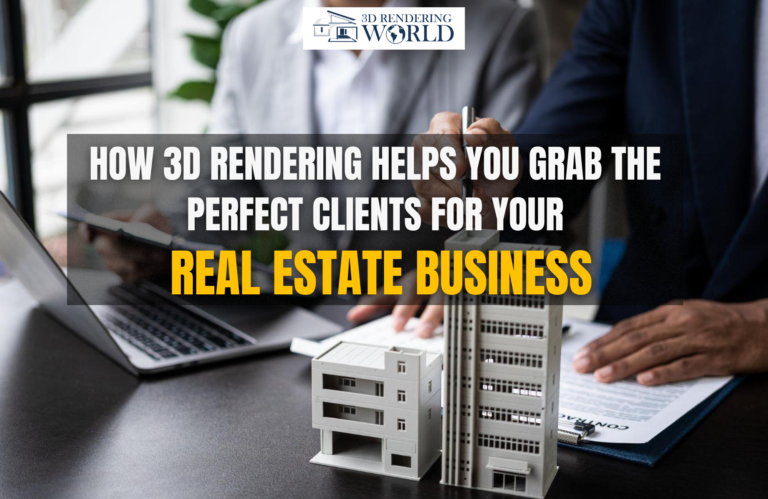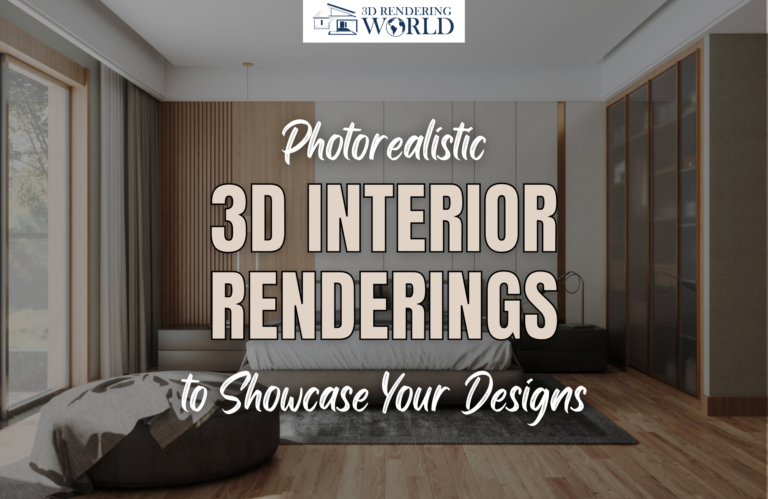Introduction
Several economic sectors are adopting 3D rendering, including the architectural visualization industry. Real estate, interior designers, and architects acknowledge the significance of the technology in providing high-quality 3D rendering services. Using these images, 3D artists find it easier to visualize their final images to customers and investors in a photorealistic manner. Besides showcasing their design ideas, these renderings are also used for marketing to potential clients. The article explores techniques for creating impressive visualizations cost-effectively.
What is a Photorealistic Rendering

What is 3D rendering and how can it benefit your business? 3D photorealistic rendering is creating three-dimensional images from 2D images to resemble real-world photos of existing surroundings. The process entails using high-quality and 3D rendering software like AutoCad to simulate real-life projects and incorporate necessary features like lighting, color, and texture to fit customers’ expectations.
3D modeling is the initial process of 3D visualization, considering other crucial factors like lighting and texture to achieve the best results. The process demands professional skills from 3D artists with a perfect understanding of various rendering tools. The benefits of 3D architectural animation are worth noting and cannot be overlooked.
How to Create a Photorealistic Rendering
Rendering tools are crucial in creating simulations of these images, making them outstanding. Here is a step-by-step guide to designing 3D architectural visualizations.
1) Modeling
This is the initial stage of 3D rendering. It entails creating a simulation of a 3D image to be transformed into reality. The models will be presented to customers to experience the impressive look before construction is completed. Among many common tools for providing 3D rendering services include 3Ds Max, Autodesk and Maya. Visit our blog to learn how 3D architectural animation brings buildings to life.
2) Texture
The second rendering step is texturing the object’s surface to mimic the existing construction projects. Architectural professionals use tools with advanced rendering technology trends like artificial intelligence, machine learning, and mathematical algorithms to be successful.
3) Lighting

This essential architectural visualization stage involves incorporating proper artificial light sources within your space. Some of the aspects to modify include shadows, refractions, and reflections. This stage aims to ensure the final render is photorealistic.
4) Rendering
The stage involves generating the final object and using suitable tools to ensure accuracy in dimensions and that the plan meets the client’s expectations. Other factors considered during this process include lighting, textures, and 3D models. The duration to complete this step depends on factors like the complexity of scenes and the number of artists allocated to the project.
5) Post-processing
This final step involves refining the render to meet customer quality. Image filtering and color correction are some of the post-processing methods. Find more information in the blog from concept to completion: the step-by-step 3D rendering process.
Difference Between Photorealistic and Non-Photorealistic Rendering

Photorealistic renderings look more real-world compared to non-photorealistic rendering. Intentional non-photorealistic visualization is done deliberately to achieve a specific style often applicable in 3D residential rendering or video games.
Statistics and reviews prove that several clients prefer exemplary photorealism levels that need outstanding skills and expertise. During hiring, dedicate enough time to find 3D artists with a suitable skill set.
Which Software is Best for Realistic Rendering
Creating realistic 3D renderings requires the use of high-quality software. Therefore, we created a list of software to help you realize your design ideas.
- 3ds Studio Max: 3D artists use this tool for interior design to create photorealistic images. However, it is somewhat complicated to use, especially for amateur 3D professionals who need to be more conversant with it.
- Lumion: This 3D modeling software is commonly used by architects to generate quick renders. Its ability to create realistic renders makes it loved by many.
- V-Ray: This 3D residential rendering software complements perfectly with other software like 3ds Max. Its characteristics include realistic material simulations, physical camera models, and global lighting. It provides outstanding results when merged with 3ds Max and 3D Studios.
- Corona Renderer: It is a faster and easy-to-use software to enhance the quality of your 3D rendering services. It generates realistic 3D images with proper lighting, quality materials, and shading features. The tool works best with 3ds Max to achieve quality results.
- Blender Cycle: Blender is a visual effects and animation rendering engine.
When choosing the right software for your rendering services, several factors should be considered. This includes cost, level of expertise, and the project’s complexity.
Tips for 3D Artists to Enhance Photorealistic Renderings

3D artists should focus on details when creating renders to avoid visualization imperfections and other related issues. First, ensure the sources of lighting installed in your interior rendering spaces complement color, shape, and shadows. If not, ensure you make the necessary adjustments to give your render the beautiful appearance it deserves.
Secondly, consider surface imperfections when rendering your 3D images by adding visible scratches on your walls, dust, and dirt. Imperfections increase the photorealism of your object.
Be keen on the camera angles from which you take your photo. Carefully choosing the camera angle positively impacts the quality of your final product. Try taking pictures from different angles, keenly considering factors like composition techniques and focal length. Carefully considering these factors guarantees you realism.
Complementing 3D visualizations with photos from an aerial view is integral in creating photorealistic images for exterior visualization. This also helps add a sense of realism to the object. Generating renders in different weather conditions is advisable to showcase to your clients. The weather conditions should be favorable to help you achieve the best results.
Software choice has an impact on the quality of renders you generate. Often, 3D artists create renders but need to consider photorealism. It is recommended to use software like 3ds Max, Maya, and Lumion to create 3D models. Similarly, selecting the right equipment is vital to generating top-notch computer-generated images. You risk creating low-quality renders if you choose computers with low memory capacity, a low RAM, and storage capacity. It is also important to understand the latest 3D rendering service trends to watch out for in 2023.
Conclusion
To conclude, it is essential to understand that 3D rendering is an art that, if properly used, will help you transform your design goals into reality by generating quality renders to showcase to customers, taking them through 360 VR house tours. The demand for 3D rendering services is increasing daily because businesses are learning the power of 3D rendering in creating realistic visualizations appealing to the target audience. Quality comes with 3D professionals dedicating enough time, energy, and quality software tailored to meet the specific needs of each project, ensuring seamless integration into the final result.
Frequently Asked Questions
The main benefit of creating realistic 3D renders on a budget is the ability to produce high-quality visuals for projects without incurring significant expenses.
Common tools for 3D rendering projects include 3ds max, Lumion, and V-Ray.
Achieving realism in 3D rendering often involves using techniques like texture mapping, ray tracing, and accurate lighting to create lifelike images.
The duration of 3D rendering services depends on the project's magnitude, materials to use, and project size, among many others.
The cost of 3D rendering services varies depending on the project's complexity.



